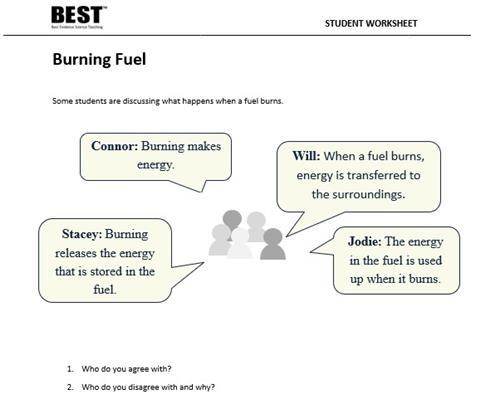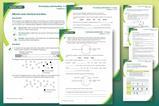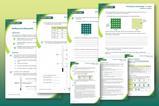Exothermic reactions go beyond simply combustion – use these tips to boost student understanding of energy transfer

Ignition sequence started… A rocket launch is an awe-inspiring example of an exothermic reaction and a classic example of combustion. The chemical reaction between the rocket fuel (kerosene) and liquid oxygen clearly transfers a huge amount of energy into the surroundings. But how did the Apollo 11 lunar module lift-off from the moon without the option of the ignition of a conventional fuel? Another highly exothermic reaction was used, one that starts as soon as the two reactants (dinitrogen oxide and ‘Aerozine 50’ – a 50:50 mixture of hydrazine and asymmetric dimethylhydrazine) come into contact.
Combustion is the most familiar example of an exothermic reaction to students, but the example of Apollo 11 shows that other reactions can also be highly exothermic. Use this example and the tips below to boost students’ understanding of chemical energetics and show them that many reactions besides combustion involve energy transfer to or from the surroundings.
What students need to know
Students need to be able to:
- link observed, qualitative changes in temperature to a chemical reaction taking place.
- suggest and explain practical methods for measuring the temperature change of chemical reactions in solution.
- use temperature measurements to identify an exothermic or endothermic reaction.
- recall that an exothermic reaction transfers energy to the surroundings.
- recall that an endothermic reaction transfers energy from the surroundings.
- recognise that energy transferred to the surrounding air dissipates (spreads out).
Ideas for your classroom
Introduce students to this topic by measuring temperature changes in a range of chemical reactions, for example with this class practical where chemicals are mixed together in polystyrene cups and the temperature of the solutions measured.
Students should focus on the use of observed temperature changes to work out whether each reaction is exothermic (temperature increase) or endothermic (temperature decrease). Most students will find this fairly easy, but do they understand why the experiment is carried out in a polystyrene cup? Can they describe the energy transfers taking place?
Energy is at the heart of chemical energetics, so supporting students in linking observation of temperature change with the energy transfers taking place is important. To this end, before the experiments, help students to think about the ‘chemical story’ and ‘energy story’ of the reactions, as well as the experimental design.
Download this
Download this worksheet (as MS Word or pdf) and the accompanying teacher notes to boost your students’ understanding of chemical changes and energy transfer in exo- and endothermic reactions, encouraging them to think about chemical and energy stories.
Download a worksheet and accompanying teacher notes to boost your students’ understanding of chemical changes and energy transfer in exo- and endothermic reactions, encouraging them to think about chemical and energy stories from the Education in Chemistry website: LINK
The chemical story
Introduce the idea of the chemical story by having students first carry out the reaction between magnesium and copper sulfate in a boiling tube. This enables them to observe the chemical change taking place. The colour change from a blue solution to a colourless solution is clearly observable.
Discuss with students how one reactant and one product are in solution.
Students should be able to feel the change in temperature; in this case the boiling tube will feel hot.
The energy story
Discuss with students the energy transfers taking place.
In the exothermic reaction between magnesium and copper sulfate, energy transfers to the water (the solvent in the solution), then to the boiling tube and then to the surrounding air (and the student’s hand).

Make links to students’ study of energy in physics. They should have learned that energy is transferred from a hotter object to a cooler object until both are at the same temperature (thermal equilibrium). Ask your students what would happen to the temperature of the products if the boiling tube is left for a while. The answer is that the temperature will return to room temperature. At this point, all the energy from the reaction will have transferred to the surrounding air.
A challenge question is why the temperature of the surrounding air has not noticeably increased. To answer this, students must recall that energy dissipates, meaning that the temperature increase is negligible.
The experiment design
Students should then be able to discuss the design of an experiment that would enable them to measure the change in temperature resulting from, in this case, the transfer of energy from the reaction.
Ask them to think about the boiling tube experiment. Is the temperature increase the maximum it could be? If not, why not?
This should lead students to understand why it is necessary to use an insulating material for the container (polystyrene) and a lid. By minimising transfer of energy to the surrounding air, almost all the energy transferred by the chemical reaction will remain inside the reaction vessel. This allows measured temperature changes to be used to compare energy transfer by different chemical reactions.
The accompanying worksheet supports students in understanding both the chemical story and the energy story and how they link together. It may be used for a range of different exothermic and endothermic reactions.
Common misconceptions
A report by Vanessa Kind, ‘Beyond appearances: students’ misconceptions about basic chemical ideas’, highlights two key misconceptions relating to understanding energy in chemistry:
- Fuels are energy stores from which energy is ‘released’.
- Energy can be created, or used up.
These misconceptions may arise partly due to the language used when discussing energy both in everyday life and in school.
Language such as ‘fuels contain energy’ can give students the impression that energy is stored inside the fuel and that this energy is somehow ‘released’ when a fuel burns. It is important that students recognise that combustion of a fuel is a chemical reaction that also involves oxygen and transfers energy to the surroundings.
Vanessa also points out that the idea of energy being ‘released’ can lead to misconceptions about chemical bonds. Students often form the idea that energy is released when bonds break, when in fact bond breaking is an endothermic process.
Other phraseology such as ‘energy running out’ when talking about a battery or supplies of fossil fuels can give students the idea that energy can be used up. When a combustion reaction transfers energy to the surrounding air, the energy dissipates. This everyday experience may reinforce the idea that energy can be ‘lost’. Making links between chemistry understanding and physics understanding could therefore help students in overcoming this area of misconceptions.
It is important to reinforce the law of conservation of energy whenever discussing energy in chemistry: energy cannot be created or destroyed.
Formative assessment
Misconceptions about energy changes in reactions may be identified using diagnostic questions. The following diagnostic question from BEST (under Topic 3: Energy and reactions) checks for some of the misconceptions described above, and comes with teacher notes and a response activity:
Misconceptions about energy changes in reactions may be identified using diagnostic questions. The following diagnostic question from BEST (under Topic 3: Energy and reactions) checks for some of the misconceptions described above, and comes with teacher notes and a response activity: LINK

Progression to 14–16
Students will learn to represent an exothermic or endothermic reaction on a reaction profile, including activation energy, as well as how to explain energy change in terms of the breaking and making of chemical bonds during a chemical reaction. They also learn how to calculate a theoretical value for the energy change of a reaction using bond energy data.
Take-home points
- Exothermic reactions result in a measured temperature increase and endothermic reactions result in a measured temperature decrease.
- Students may think that energy is released from a fuel when it burns rather than understanding that a chemical reaction has taken place.
- Support students to link the ‘chemistry story’ with the ‘energy story’ to help them link their observations of temperature change with the energy transfers.
- The energy change of a reaction is the difference between the energy required to break the bonds of the reactants and the energy transferred back to the surroundings when new bonds are formed to create the products.














No comments yet